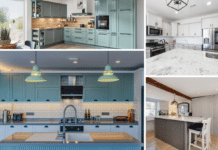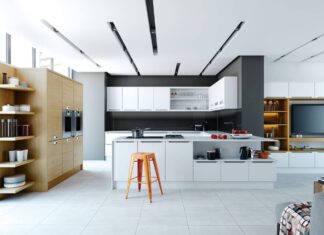Built-in appliances can keep a whole kitchen organized and clean. Some homeowners do not like the aesthetic of stainless steel appliances everywhere in the kitchen. Either they can clutter the countertop, eat up space, or use too much space.
What does having a built-in appliance do for the kitchen?
Built-in Appliances in the Kitchen
Many people do not like how many individual appliances they need. These include the refrigerator, range, and dishwasher. Although those 3 are the only visible appliances, they more typically sit on the countertop and occupy space.
Toasters, toaster ovens, blenders, coffee makers, rice cookers, slow cookers, and even some microwaves occupy countertop space for many individuals and cabinet space when stored away.
Popular Built-in Appliances For an Organized and Clean Kitchen
Here are some of the more common built-in appliances of today’s kitchen.
Built-in Dishwasher
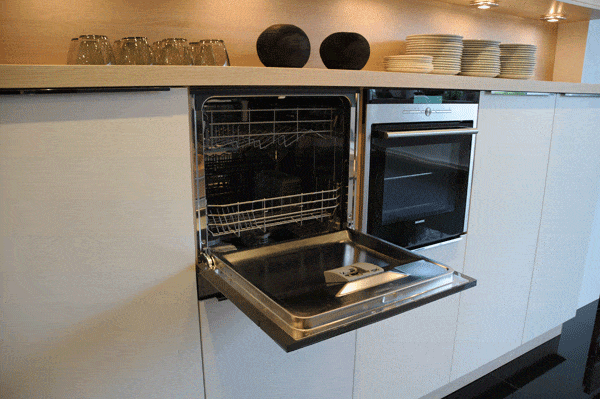
A dishwasher is the easiest to build into the cabinets. This option is available in panel-ready dishwashers and dishwasher drawers.
Panel-ready dishwashers are just like normal dishwashers but accept a cabinet face on the front. They sit flush to the cabinet front rather than protruding from it.
Most slide-in appliances, including the fridge and range, protrude from the cabinets and do not sit flush. Panel-ready appliances will cost a lot more than normal appliances. Customers who want the aesthetic of a flush kitchen design may choose the higher route.
Dishwasher drawers are commonly found in small kitchens like design studio apartments. They are less than 10” high. Small kitchens cannot afford to put a whole dishwasher appliance in such a small room, and cannot sacrifice storage space.
Would a normal kitchen replace a standard dishwasher for this variant? A typical dishwasher is provided only if the person does not want the large stainless steel.
Built-in Refrigerator
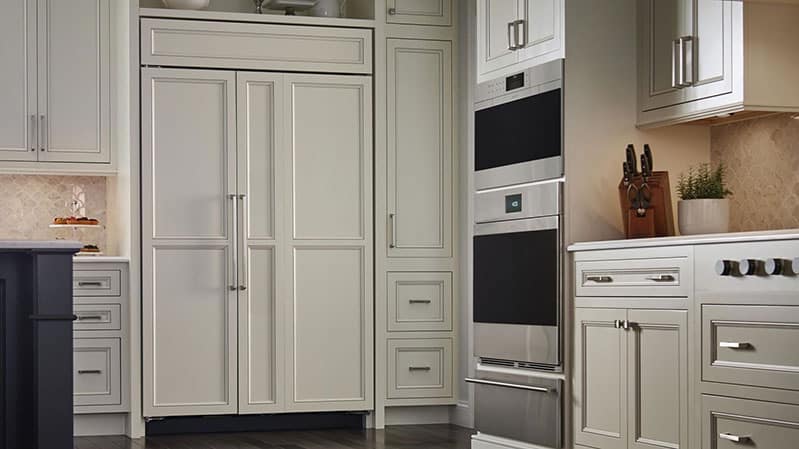
Like their dishwasher equivalents, built-in refrigerators will sit flush with the cabinet fronts. Aesthetically, they will look like a pantry. Having this fridge next to the pantry will create a visually pleasing design.
How do you get hold of these panels? Typically, custom panels for panel-ready appliances need to be custom-ordered.
A cabinet door maker is a go-to person to create the needed panels, but at a cost. In cabinetry, custom usually refers to a high-end cost. For sure, this is the most significant built-in appliance one would have in a kitchen.
Trash Can Cabinet
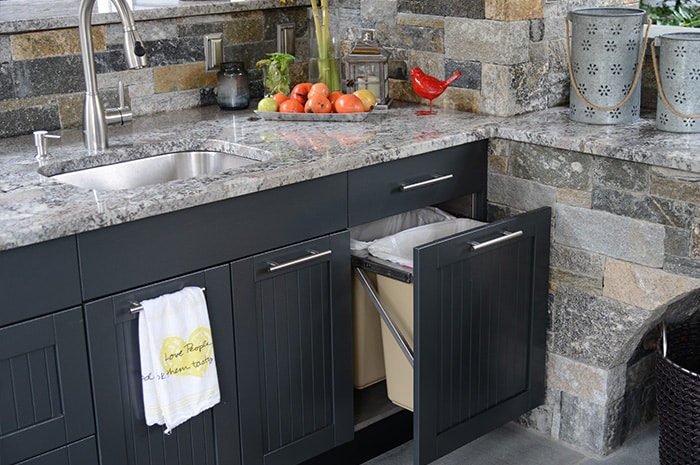
Is a trash cabinet considered a built-in appliance? Yes and no.
Having a trash can cabinet removes the need for a physical trash can. It differs from the mindset of being a built-in appliance because it isn’t an appliance.
Some cabinet companies may create a cabinet that can store a complicated trash bin, which is more suited for storing trash. Having this cabinet helps reduce the number of standalone add-ons in a kitchen.
Typically, a kitchen that favors built-in appliances will lean toward modern appliances. The ideology behind modern kitchens is sleek and minimalist.
More Obscure Built-in Appliances
Here’s a list of more obscure built-in appliances.
Trash Compactor
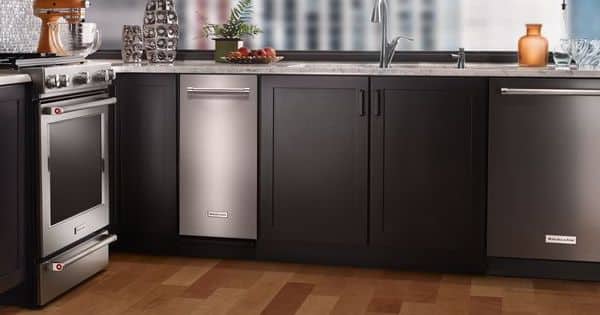
This appliance is similar to having a trash can cabinet, but industrialized. Like its built-in dishwasher brethren, the trash compactor can have a panel-ready option to look identical to your cabinets. This gives off the illusion of having a stainless steel appliance and everything else in your kitchen.
A trash compactor typically measures 15” wide, 34” tall, and 24” deep. One may think that having another stainless steel appliance is too much. Having a panel ready replaces the need for a trash can and reduces waste.
Double Oven or Wall Oven Built-in Appliance
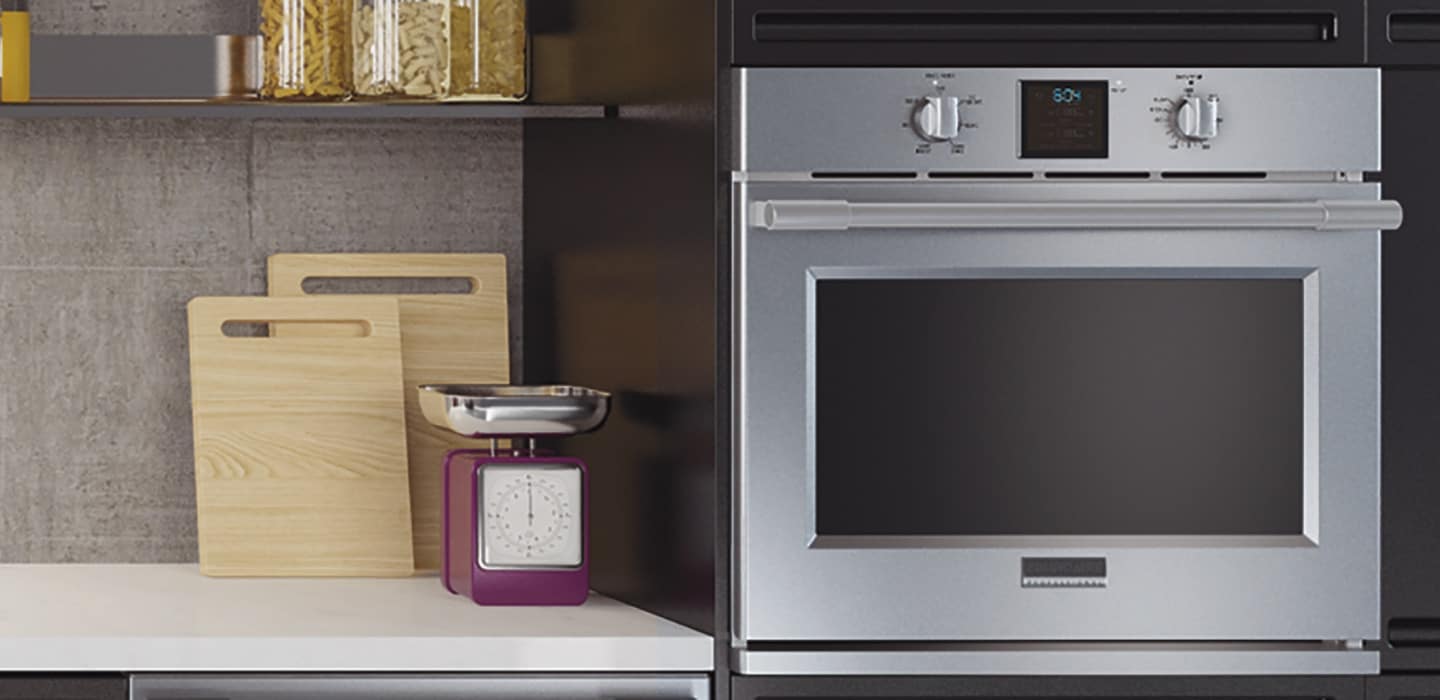
When attempting to replace stainless steel appliances, a range is debated. A typical slide-in range has a stovetop and an oven split into a wall oven and a stovetop.
Who would want a wall-mounted oven rather than a traditional slide-in range? Some customers may enjoy less stainless steel between the cabinets and want two ovens.
A busy kitchen with many guests may require multiple cooking methods simultaneously. To recreate the look of a slide-in range, a person can simply build a wall oven into the cabinets under a stovetop.
Range Top or Stovetop
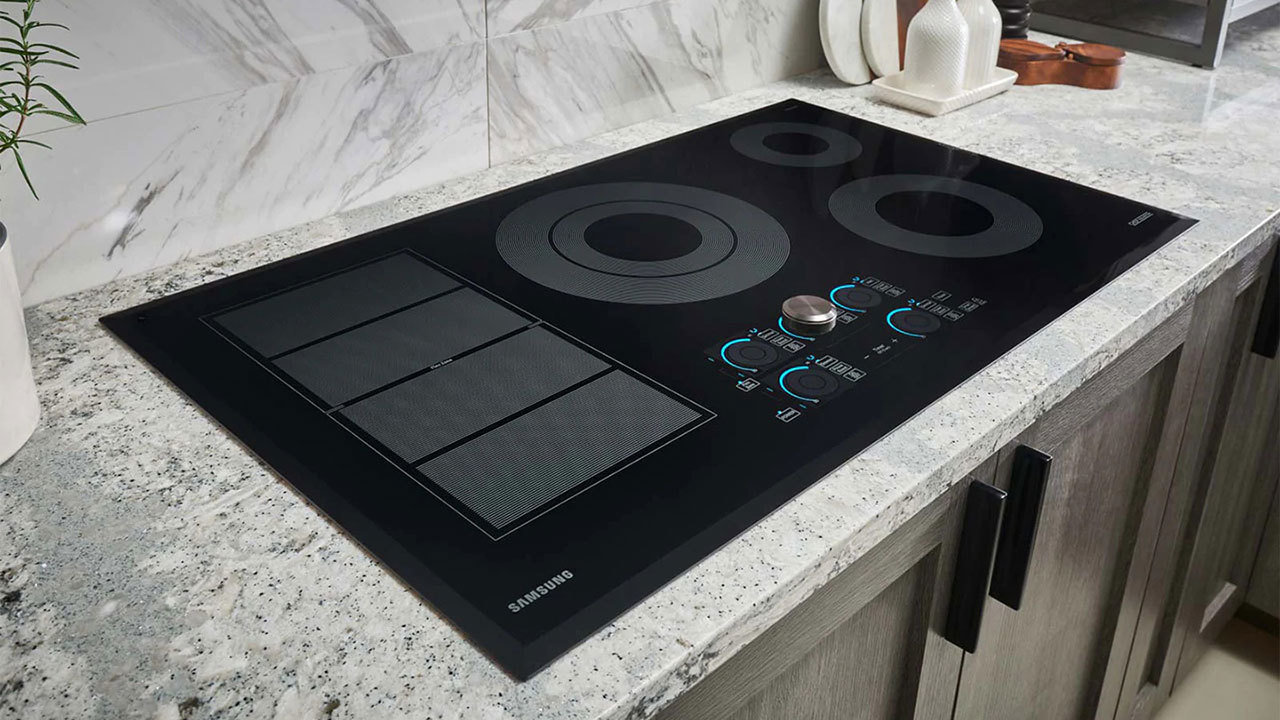
People looking to replace their ovens will choose a range or a stovetop. These appliances are only a few inches thick and allow cabinet storage. The stovetop allows for a continuous cabinet aesthetic without a break, with a stainless steel appliance in between.
The sleek, modern stovetop will better suit European-style kitchens. Traditional kitchens also feature either ranges or stovetops. Typically, having this means the homeowner will install a wall oven in the kitchen.
Built-in Microwave or Microwave Oven
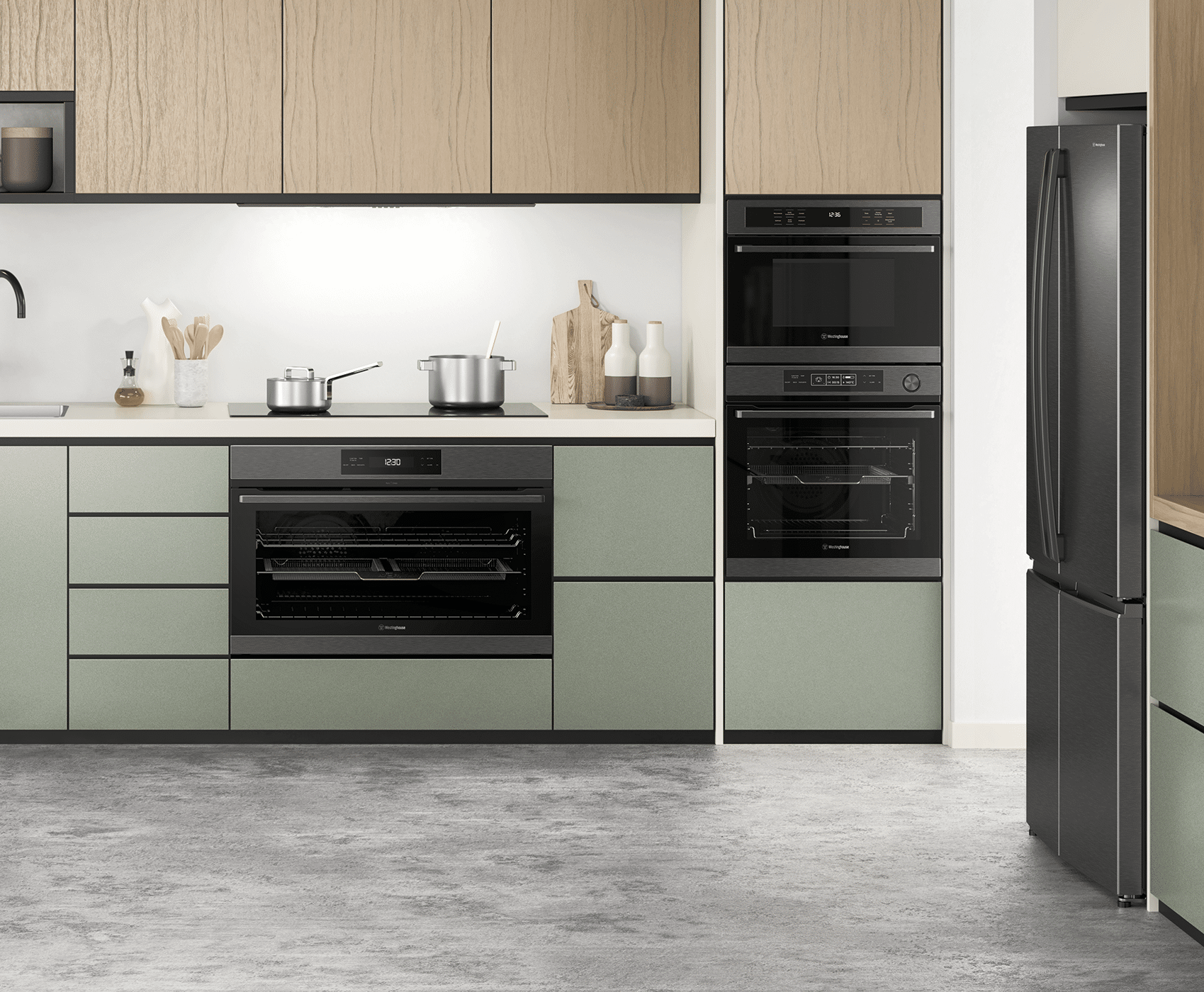
There are two ways to replace a microwave sitting on the countertop. The first is with a built-in microwave unit. This is a base cabinet drawer with an opening for a microwave unit.
Most microwaves purchased from a home improvement store have a separate microwave trim kit, which creates a customized look.
Having a microwave over a wall oven will result in mismatched sizes. The trim kit allows the microwave to match the same width.
Microwave Hood

This method commonly replaces a countertop microwave and tackles two replacements at once. A microwave hood vent sits over the stove, acting as a range hood. Some homeowners may opt out of this option.
Microwaves may not be needed in every household. Some need a traditional range hood for stronger air suction, or they prefer not to use a microwave. Either way, they simplify the visual appliances in the kitchen.
Is a microwave hood a good idea? There are some trade-offs to having a microwave hood.
Some people do not like seeing a microwave in their kitchen, so they prefer the built-in microwave cabinet with the trim kit.
When cooking, grease can get on glass doors, and the microwave hood door is no exception. Since it is right above and in front of you, the glass door is bound to get dirty and constantly needs to be cleaned.
Built-in Coffee Maker
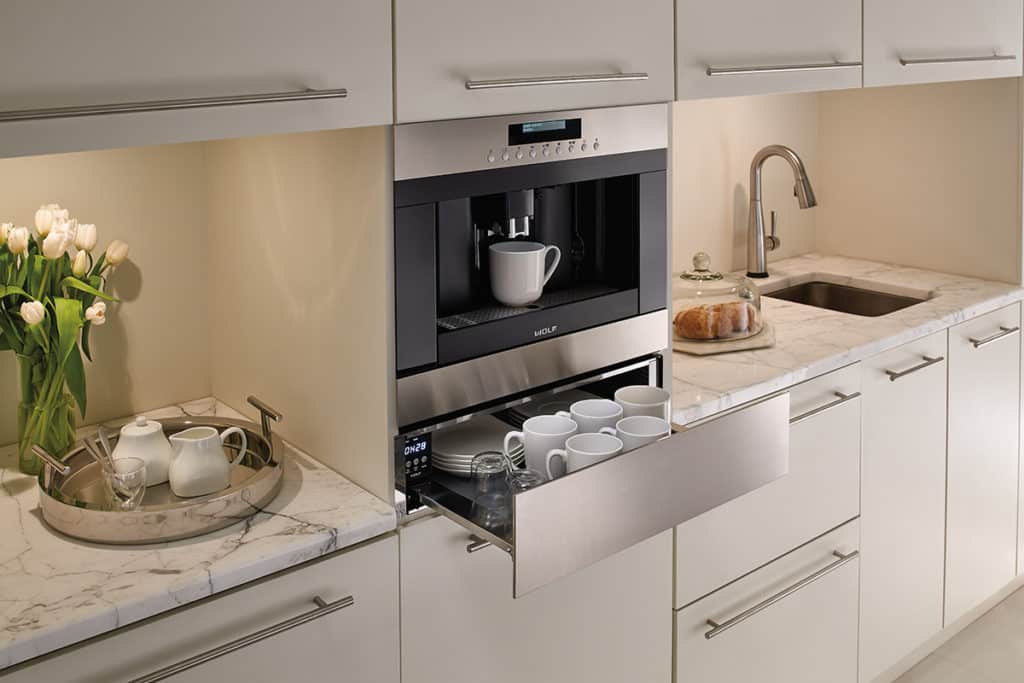
It’s not a typical appliance everyone needs, especially those who prefer tea. According to Food Navigator, only 23% of US households own a coffee pod machine.
Why are coffee makers incorporated into cabinets? Common coffee maker machines are 15” wide, 21” deep, and as tall as 18” high. This is one of the largest appliances found on countertops that can be built in.
Potential Built-in Appliances
Many other appliances we want hidden are too difficult to incorporate into cabinets. Either these appliances do not have standard sizes.
There are some built-in appliances that only appeal to a small audience and are not used by everyone. These may include toasters, rice cookers, blenders, slow cookers, and toaster ovens.
Although one could transform a traditional cabinet into a customized pull-out built for a specific appliance like these, it is not practical. The above appliances require an outlet, and having the appliance built into a cabinet would require the cable to compensate for the appliance being stored inside.
Is this idea not doable? It is possible to create.

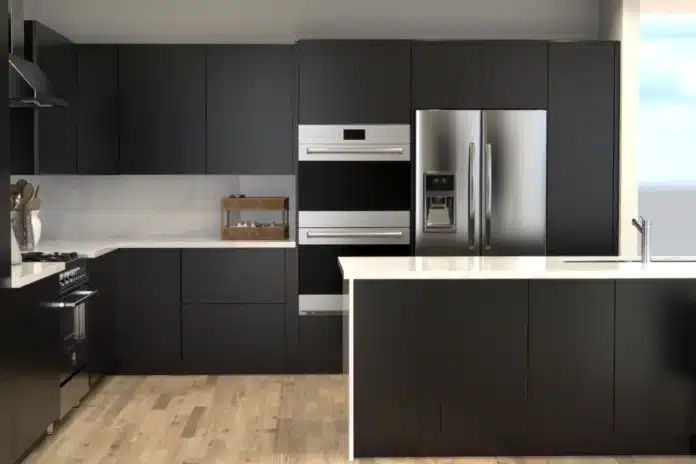
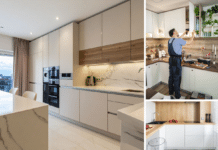
![How To Choose The Right Kitchen Cabinet Colors [2025 Guide] choosing the right kitchen cabinet colors](https://cdn.bestonlinecabinets.com/blog/wp-content/uploads/2025/10/Kitchen-Cabinet-Colors-218x150.png)
